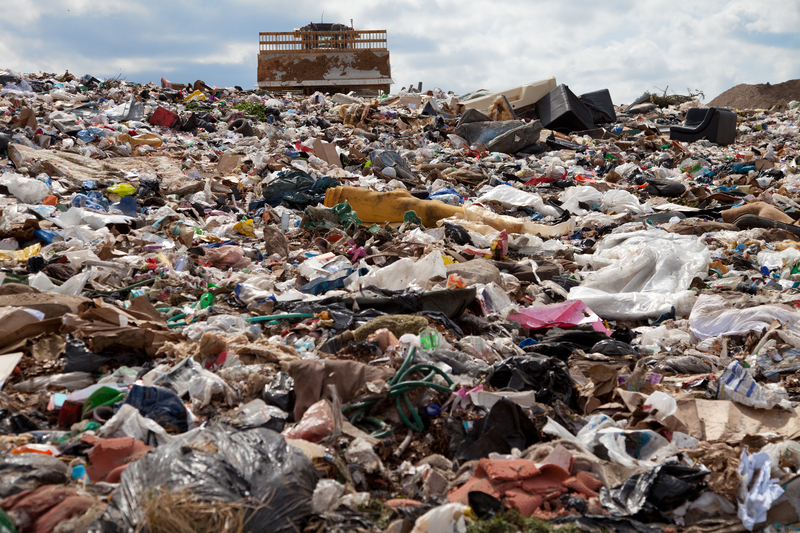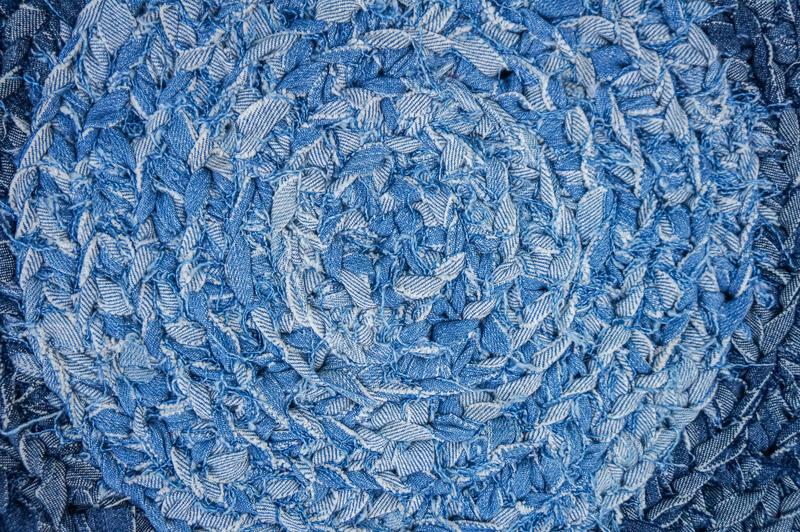Repurposing Nonstick and Metal Cookware Responsibly
Looking for innovative ways to repurpose metal and nonstick cookware responsibly? Whether you're upgrading your kitchen set or downsizing, you might be left with old pans and pots that no longer serve their original purpose. While tossing them out may seem like the quickest fix, responsible cookware reuse supports both the environment and your creative spirit. This comprehensive article explores the science behind recycling, eco-friendly alternatives, and inspiring upcycling ideas to transform old cookware into valuable household items.
Why Should You Repurpose Nonstick and Metal Cookware?
Nonstick and metal cookware have transformed home cooking for decades. However, these kitchen essentials don't last forever. Over time, scratches, warping, and general wear render them less effective or even unsafe. Instead of contributing to overflowing landfills, consider the many environmentally conscious ways to reuse or recycle old cookware.
- Reduce Landfill Waste: It's estimated that millions of tons of kitchen equipment are discarded each year. Responsible repurposing lessens this burden.
- Support Circular Economy: Prolonging the life of existing products helps keep resources in use and minimizes the need for new raw materials.
- Save Money: Creative recycling and upcycling can provide you with useful items without additional cost.
- Boost Creativity: Giving old cookware a new purpose allows you to personalize your home in unique, sustainable ways.

Understanding Nonstick and Metal Cookware
Before repurposing metal or nonstick pans, it's vital to understand their composition and potential risks:
What Is Nonstick Cookware Made Of?
Most nonstick cookware features a core of aluminum or stainless steel covered with a synthetic coating--commonly Teflon (Polytetrafluoroethylene, PTFE) or ceramic. While convenient, these coatings can degrade over time, especially at high temperatures, releasing substances that may be harmful to health or the environment.
What About Metal Cookware?
Metal cookware, such as cast iron, stainless steel, copper, or aluminum pots and pans, is valued for its durability and heat distribution. Still, after years of use, these pieces may develop cracks, rust, or warped surfaces.
When Should You Retire Cookware?
- If the nonstick coating flakes or peels
- Visible rust or permanent discoloration
- Severe warping or deformation
- Broken or loose handles that cannot be safely repaired
Once cookware loses its original use, it's time to explore creative and responsible disposal or transformation methods.
Eco-Friendly Options Before Upcycling or Repurposing
Before giving your cookware a new function, consider if it can be recycled or donated.
Can Nonstick and Metal Cookware Be Recycled?
Recycling requirements vary by municipality. Metal pans--especially those made of iron, aluminum, or steel--are accepted at many scrap yards. However, nonstick coatings must first be removed (if possible), as they can contaminate the recycling process. Check with your local recycling center for specific guidelines.
- Contact your city's waste management or visit their website for instructions
- If recycling is not offered, consider responsible upcycling
Donating Old Cookware
If your pots and pans are still usable, many charities, shelters, and thrift stores accept donations. Make sure to clean items thoroughly and inspect for significant damage. Repurposed cookware donations can help families in need and extend the product lifecycle.
Creative Ways to Repurpose Nonstick and Metal Cookware
If recycling or donation is not an option, you can breathe new life into your old cookware through a range of innovative projects. Below are some imaginative ideas for upcycling old nonstick pans and metal pots.
1. Turn Pans Into Wall Art or Memo Boards
- Chalkboard Pan: Paint the inner surface with chalkboard paint to create an instant message center for your kitchen or office.
- Magnetic Board: Attach small magnets and hang recipes, notes, or shopping lists.
- Decorative Trays: Paint or decoupage your old pans for use as serving trays, plant saucers, or wall displays.
2. Planters and Garden Helpers
- Herb and Flower Pots: Drill small holes for drainage and fill with soil and seeds to create unique planters.
- Birdbath or Feeder: Suspend a shallow nonstick or metal pan as a bird bath, or fill with seeds as a feeder.
- Garden Tool Holder: Attach old colanders or pans to a fence or wall to store gloves and small gardening tools.
3. Organizers for Home or Office
- Desk Organizer: Use small pans or lids to corral paper clips, pens, and other office supplies.
- Entryway Catchall: Place an old skillet or pot by the door for keys, coins, and sunglasses.
4. Outdoor and DIY Projects
- Wind Chimes: Hang lids, handles, and pan bottoms with sturdy string or wire for whimsical music in your garden.
- Lampshades or Lanterns: Drill holes in pans for interesting lighting effects or use as rustic lampshades in a shed or patio.
- Craft Tool Caddy: Mount larger pans to a bench or work space to store small DIY supplies.
5. Toys and Pet Accessories
- Pet Food or Water Dish: Clean thoroughly for use as a food or water tray for pets.
- Pretend Play Props: Use for kids' play kitchens or mud pies in the backyard.
Safety Tips for Repurposing Nonstick Cookware
When repurposing old nonstick pans, consider safety--especially if they're flaking, chipped, or heat-damaged.
- Avoid Food Use: Do not use old or damaged nonstick pans for preparing or serving food, even if cleaned.
- Handle With Care: Remove loose coatings before crafting, and use protective gloves and masks when sanding or painting.
- Keep Away from Children and Pets: Flaking coatings may be hazardous if ingested.
Eco-Conscious Disposal of Nonstick Cookware
If a pan can't be recycled, donated, or creatively repurposed, responsible disposal is crucial. Wrap damaged cookware to prevent injury to sanitation workers, and use designated hazardous waste facilities when necessary.
How to Prepare Cookware for Repurposing
- Clean Thoroughly: Remove all food residue, oils, and stuck-on debris.
- Disassemble if Necessary: Remove plastic handles, knobs, or silicone parts. These elements may need to be recycled separately.
- Sand or Prime Surfaces: Lightly sand the pan or pot to improve paint or glue adhesion for craft projects.
- Seal Coating: If leaving nonstick coatings exposed, consider a clear sealant to prevent flaking in decorative uses.
Upcycling Metal Cookware for the Garden and Beyond
Metal cookware upcycling can add both utility and charm to your outdoor spaces:
- Plant Holders: Cast iron skillets or metal pots make sturdy containers for herbs, succulents, or flowers.
- Compost Scoops: Old pots or ladles can be repurposed as durable scoops for fertilizer or compost.
- Garden Art: Paint and arrange pans, colanders, or lids into eye-catching sculptures or functional trellises.
Repurposing Cast Iron and Stainless Steel Responsibly
Unlike nonstick pans, cast iron and stainless steel can be re-seasoned or refurbished for use in the kitchen or grill. If cookware can't be restored, they become excellent candidates for outdoor planters, rustic candle holders, or even live-fire cooking utensils for the backyard.
Repurposing Cookware for Community Projects
Some organizations or schools welcome old cookware for art classes, community gardens, or maker spaces. Donating in bulk can benefit local nonprofits, schools, or camps--ensuring your cookware continues to serve the community and reduces environmental impact.

Frequently Asked Questions About Repurposing Nonstick and Metal Cookware
1. Is It Safe to Repurpose Nonstick Pans?
It's safe for non-food uses when flaking or damaged. Always avoid using damaged nonstick cookware for cooking or serving food, as the coatings may be unhealthy if ingested.
2. Can All Cookware Be Recycled?
Most metal cookware can be recycled, though check first for special requirements regarding nonstick coatings. Some municipalities may require you to separate composite pans or remove handles.
3. Why Not Throw Cookware in the Waste Bin?
Large volumes of cookware in landfills contribute to lasting environmental damage. Metal and synthetic coatings break down slowly, potentially leaching into soil and waterways. Repurposing or recycling supports a healthier planet.
4. Are There Other Uses for Old Cookware?
Absolutely! Old pans and pots can serve countless new functions, from planters and organizers to DIY and craft projects. Your imagination is the only limit.
Conclusion: Embrace Sustainable Repurposing for a Greener Home
Repurposing nonstick and metal cookware responsibly isn't just about creativity--it's a vital component in the push toward greater sustainability. By recycling, donating, or transforming old household items, you lower your environmental impact and inspire others to rethink discards.
Explore local recycling programs, connect with community organizations, or initiate DIY projects that bring personality and function to your home. By embracing the challenge to repurpose cookware safely and sustainably, you become a part of the global movement for a cleaner, greener future.
Share Your Projects and Inspire Others!
Have your own ideas or success stories for giving new life to old kitchen cookware? Share your creativity and inspire others in your community to make a difference--one pan at a time!